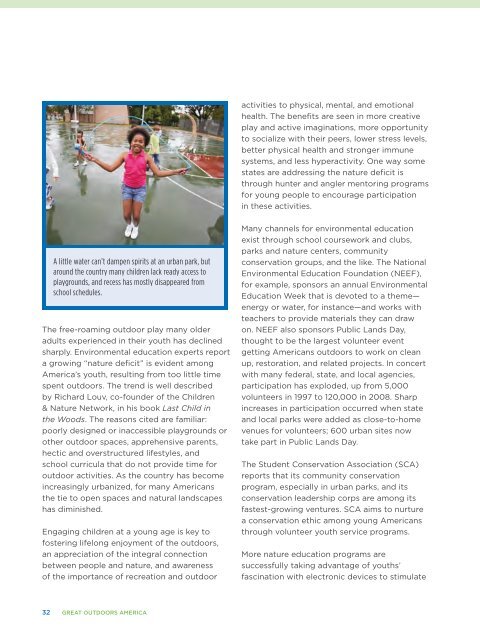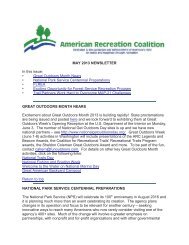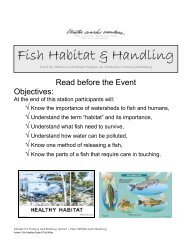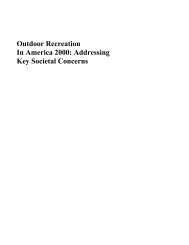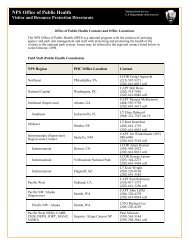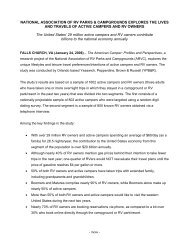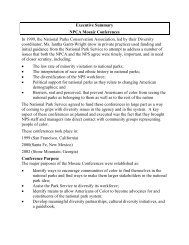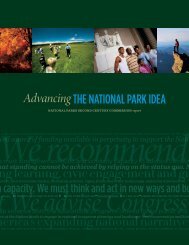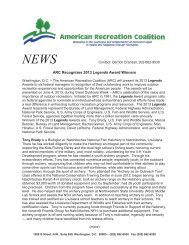Outdoor Resources Review Group Report - American Recreation ...
Outdoor Resources Review Group Report - American Recreation ...
Outdoor Resources Review Group Report - American Recreation ...
You also want an ePaper? Increase the reach of your titles
YUMPU automatically turns print PDFs into web optimized ePapers that Google loves.
A little water can’t dampen spirits at an urban park, but<br />
around the country many children lack ready access to<br />
playgrounds, and recess has mostly disappeared from<br />
school schedules.<br />
The free-roaming outdoor play many older<br />
adults experienced in their youth has declined<br />
sharply. Environmental education experts report<br />
a growing “nature deficit” is evident among<br />
America’s youth, resulting from too little time<br />
spent outdoors. The trend is well described<br />
by Richard Louv, co-founder of the Children<br />
& Nature Network, in his book Last Child in<br />
the Woods. The reasons cited are familiar:<br />
poorly designed or inaccessible playgrounds or<br />
other outdoor spaces, apprehensive parents,<br />
hectic and overstructured lifestyles, and<br />
school curricula that do not provide time for<br />
outdoor activities. As the country has become<br />
increasingly urbanized, for many <strong>American</strong>s<br />
the tie to open spaces and natural landscapes<br />
has diminished.<br />
Engaging children at a young age is key to<br />
fostering lifelong enjoyment of the outdoors,<br />
an appreciation of the integral connection<br />
between people and nature, and awareness<br />
of the importance of recreation and outdoor<br />
32 GREAT OUTDOORS AMERICA<br />
activities to physical, mental, and emotional<br />
health. The benefits are seen in more creative<br />
play and active imaginations, more opportunity<br />
to socialize with their peers, lower stress levels,<br />
better physical health and stronger immune<br />
systems, and less hyperactivity. One way some<br />
states are addressing the nature deficit is<br />
through hunter and angler mentoring programs<br />
for young people to encourage participation<br />
in these activities.<br />
Many channels for environmental education<br />
exist through school coursework and clubs,<br />
parks and nature centers, community<br />
conservation groups, and the like. The National<br />
Environmental Education Foundation (NEEF),<br />
for example, sponsors an annual Environmental<br />
Education Week that is devoted to a theme—<br />
energy or water, for instance—and works with<br />
teachers to provide materials they can draw<br />
on. NEEF also sponsors Public Lands Day,<br />
thought to be the largest volunteer event<br />
getting <strong>American</strong>s outdoors to work on clean<br />
up, restoration, and related projects. In concert<br />
with many federal, state, and local agencies,<br />
participation has exploded, up from 5,000<br />
volunteers in 1997 to 120,000 in 2008. Sharp<br />
increases in participation occurred when state<br />
and local parks were added as close-to-home<br />
venues for volunteers; 600 urban sites now<br />
take part in Public Lands Day.<br />
The Student Conservation Association (SCA)<br />
reports that its community conservation<br />
program, especially in urban parks, and its<br />
conservation leadership corps are among its<br />
fastest-growing ventures. SCA aims to nurture<br />
a conservation ethic among young <strong>American</strong>s<br />
through volunteer youth service programs.<br />
More nature education programs are<br />
successfully taking advantage of youths’<br />
fascination with electronic devices to stimulate


